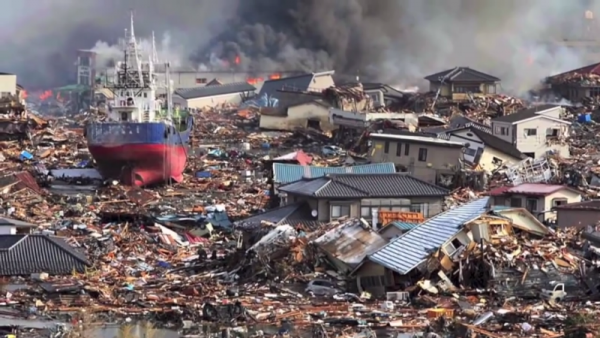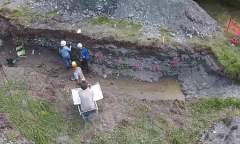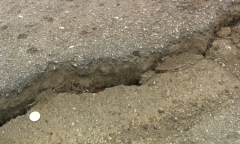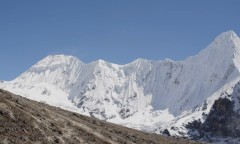By KM Diaz, | May 26, 2017

A tsunami occurred near the coastal communities of the Indian Ocean after the magnitude 9.2 earthquake in Sumatra, which killed approximately 250,000 people. (YouTube)
New evidence has been found regarding the Sumatra earthquake and tsunami on December 26, 2004. According to an international team of scientists, dehydration of minerals deep below the ocean floor causes the severe earthquake.
A tsunami occurred near the coastal communities of the Indian Ocean after the magnitude 9.2 earthquake in Sumatra, which killed approximately 250,000 people.
Like Us on Facebook
In 2016, the International Ocean Discovery Program (IODP), led by the researchers from the Colorado School of Mines and the University of Southampton, conducted a scientific ocean drilling to study the quake area.
Upon the expedition using the vessel JOIDES Resolution, researchers examined, for the first time, the rocks and sediments located on the oceanic tectonic plate that maintains the Sumatra subduction zone. Originally, the subduction zone is where the two tectonic plates meet, in which one slips beneath the other to create largest earthquakes on Earth with catastrophic tsunamis.
Professor Lisa McNeill, the co-leader of the expedition from the University of Southampton, said that the tsunami in the Indian Ocean in 2004 was triggered by an odd powerful earthquake that causes an extensive rupture in the area. Researchers want to know the reason behind large tsunami and earthquakes to understand if it could also happen to different regions with same geological properties.
Researchers focused their study on the method of dehydration of sedimentary minerals beneath the ground, frequently happens in the subduction zone. The process of dehydration controls the area and extent of the slip within the plates, which is also regulated by the imposition of the sediments and temperature. Hence, a severe earthquake happens.
The team used the latest tool to drill the ocean to extract samples from 1.5 km below the seabed. Through this, they were able to get the measurements of sediment composition, as well as the thermal, physical, and chemical properties. They also conducted simulations to assess the behavior of rock and sediments if they have already traveled 250 km to the east approaching the subduction zone.
In their findings, sediments on the ocean floor - eroded from the Tibetan Plateau and Himalayan mountain range - are thick enough to stand high temperatures and accelerate the dehydration process. Because of this, a strong material will be created to allow an earthquake to slip on the surface of the subduction fault to superficial depths and over a greater fault area - producing a powerful earthquake in 2004.
The research team will continue their Sumatra drilling expedition to obtain additional samples and data for further numerical simulations and laboratory experiments. The results will be used to evaluate the possible hazard in the future in Sumatra and to other similar subduction zones.
The finding of sediments samples below the seabed is described in a paper published in the journal Science, led by Dr. Andre Hüpers of the MARUM-Center for Marine Environmental Sciences at the University of Bremen.
-
Use of Coronavirus Pandemic Drones Raises Privacy Concerns: Drones Spread Fear, Local Officials Say

-
Coronavirus Hampers The Delivery Of Lockheed Martin F-35 Stealth Fighters For 2020

-
Instagram Speeds Up Plans to Add Account Memorialization Feature Due to COVID-19 Deaths

-
NASA: Perseverance Plans to Bring 'Mars Rock' to Earth in 2031

-
600 Dead And 3,000 In The Hospital as Iranians Believed Drinking High-Concentrations of Alcohol Can Cure The Coronavirus

-
600 Dead And 3,000 In The Hospital as Iranians Believed Drinking High-Concentrations of Alcohol Can Cure The Coronavirus

-
COVID-19: Doctors, Nurses Use Virtual Reality to Learn New Skills in Treating Coronavirus Patients











